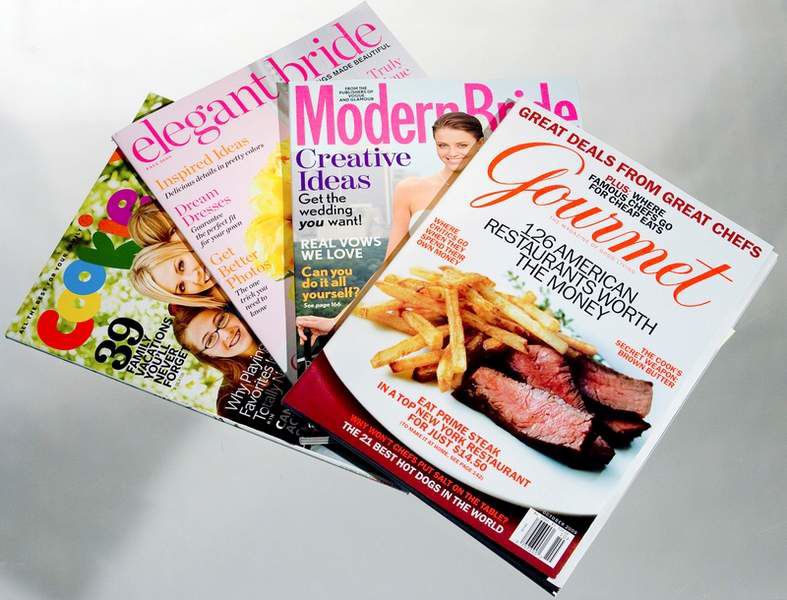Food magazines find their niches
Published 4:00 am Sunday, November 8, 2009

- Conde Nast has stopped publishing four magazines: Cookie, Elegant Bride, Modern Bride and Gourmet. To stay alive, other publishers are adopting what broadcasters call narrowcasting focusing on the needs of a small but enthusiastic audience. Gourmet, with 980,000 regular readers, may have met its end by, oddly, trying to do too much, rather than too little.
Since Conde Nast shuttered Gourmet magazine a month ago, the world of food publishing has been consumed by postmortems. What went wrong and why? But maybe a more interesting question is this: Where do we go from here?
The queen is dead, long live the queen. But which magazine will emerge to take Gourmets throne? The answer is, probably none of them.
In looking through the Thanksgiving issues of the various food periodicals now on the newsstands, it becomes clear that more and more magazine publishing is about what broadcasters call narrowcasting focusing on serving the needs of a small but enthusiastic audience. In the end, Gourmet may have been done in by trying to do too much, rather than too little.
Magazines are getting more and more fragmented, and I think well see more and more of that in the future, says Steve Cohn, a magazine world insider and editor in chief of Media Industry Newsletter. Big mass magazines are still there, but theyre losing circulation.
Robert Boynton, director of the literary reportage program at the Arthur L. Carter Journalism Institute at New York University, agrees. I think of Gourmet closing as part of the bigger story of the demise of the general-interest magazine. It was the closest thing the food world had to a Life or Saturday Evening Post. But in publishing today, it has become easier and more profitable to disaggregate or divide up readership into small groups.
That may be good business, but in the process the whole notion of food itself as a cultural artifact gets lost. And it made it really difficult for a magazine that not only had incredible photography and recipes and editing, but had really, really fine writing.
Cohn compares it to the way the business of television has changed. Basically, the magazine world is becoming like cable TV. Everything is narrowcast. When I was a kid, there were three TV networks and everybody watched The Cosby Show and All in the Family. Now there are a zillion cable channels, with all of these shows youve never heard of but that still attract an audience.
I think were only going to see more of this fragmentation. Unfortunately, that seems to match everything else thats going on these days.
(At this point, a disclaimer is necessary. Its impossible to write about food for 25 years and not have personal connections to stumble over in a story like this. Former Gourmet editor Ruth Reichl hired me to work at the Los Angeles Times and remains a friend, as do many editors and writers at other magazines.)
What went wrong?
Most of the early analysis seemed to blame Gourmets closing on one of two factors. Some blamed what they perceive as the magazines highfalutin tone for alienating readers. New-media enthusiasts used it as one more example of how print is dead.
But those arguments seem to be contradicted by the facts. In the first place, Gourmets circulation was a far-from-pitiful 980,000 up almost 100,000 from 10 years ago. That hardly sounds like a magazine readers were running away from.
As for that whole print dinosaur thing, have you looked at the Gourmet Web site? Video, Web-only stories, lots of art, commentary, lots of reader feedback its hard to think of a food Web site that offers as much.
Reading deep sociological implications into corporate business decisions is always risky. Conde Nasts decision was almost certainly based a lot more on short-term dollars and cents than on aesthetics or visions of the future.
It was as much the economics of Conde Nast as the economics of Gourmet that forced the closure, Cohn says. It wasnt a case of Gourmet failing as much as Conde Nast having serious trouble on a corporate scale. In a different company, Gourmet would probably still be around. The fundamentals were very good.
Boynton argues that if Gourmet had a major flaw, it was more likely trying to be a department store in what has become a specialty-store publishing world. It tried too hard to be all things to all people. Recipes? Check. Long, writerly pieces by big-name bylines? Check. Short practical cooking pieces? Check. Travel, both high and low? Check and double-check.
That kind of coverage is expensive, and in a struggling corporation in a tight economy, that may have been enough to doom it.






